The Lost City of Kota Gelanggi – In Malaysia
(By Tsem Rinpoche)

The lost city of Kota Gelanggi is now located amidst dense jungles of the southern Malaysian state of Johor, near a forest reserve managed as Linggiu Reservoir. The site is an area around 140 square kilometres (54 square miles) of the forest reserve surrounding Sungai Madek and Sungai Lenggiu.
The lost city of Kota Gelanggi is an ancient archaeological site located in the deep, dense tropical jungle of Johor state, Malaysia. It is speculated to be the first capital of the ancient Empire of Srivijaya and is one of the oldest Kingdoms in South East Asia’s Malay Peninsula. It is possible that the ancient lost city is even older than Angkor Wat in Cambodia and Borobudur in Indonesia. The site was brought to the public’s attention as a “discovery” in a Malaysian press by Raimy Che-Ross, who was an independent researcher with an academic background in political science, anthropology and art history.
According to Raimy Che-Ross, it was an old Malay manuscript that was once owned by Sir Stamford Raffles, the founder of Singapore, that led Raimy Che-Ross to believe in the existence of the ancient city in Johor. The presence of the city was indicated in Malayan folklore for over four centuries. His findings were published in the Journal of the Malaysian Branch of the Royal Asiatic Society in 2004 and on top of that, he managed to identify unusual patterns of vegetation in the alleged site of the ancient city. A remote sensing satellite image taken by the Malaysian Centre for Remote Sensing (Macres) has revealed possible structures which match aerial photographs taken by Canberra-based independent researcher Raimy Che-Ross. The image has also shown that the apparent structures are much more extensive than previously thought.
It is reported that the lost city of Kota Gelanggi in Johor could possibly be the unidentified temple shown in a thousand-year-old illustration from Nepal, in “The Perfection of Wisdom in 8,000 Lines” (Astasahasrikaprajnaparamita).
1,000-year-old image of temple may be that of Kota Gelanggi
BY TEOH TEIK HOONG AND AUDREY EDWARDS
PETALING JAYA: The lost city of Kota Gelanggi in Johor may be the unidentified temple shown in a 1000-year-old illustration of an unknown place in the region, a Cambridge University expert said.
R.C. Jamieson, Keeper of Sanskrit Manuscripts at the University of Cambridge, Britain, said the origin of the illustration which showed a former Buddha, Dipamkara, making a gesture of reassurance and holding a fold of his robe at his shoulder in a temple in Java had yet to be verified.
“However, we must bear in mind that Java then might not have been just the present island alone. At the time of The Perfection of Wisdom in 8,000 Lines (Astasahasrikaprajnaparamita) manuscript, the term encompassed Sumatra and part of the Malay peninsula.
“The manuscript states that the image was taken around 1015 A.D.,” he said in an e-mail interview from London.

RELIGIOUS PORTRAYAL: Dipamkara making a gesture of reassurance and holding a fold of his robe at his shoulder while two attendants make the gesture of explanation and hold a blue lotus in an illustration from the manuscript kept at Cambridge University.
The palm-leaf manuscript got to Cambridge from Nepal and the main text was in Sanskrit, Jamieson added.
The illustration also shows two attendants who are bodhisattvas (deities) making the gesture of explanation and holding a blue lotus, among other items, while standing in a temple between some trees.
Jamieson said whether or not the illustration was that of the lost city of Kota Gelanggi, it was worth a detailed investigation.
He said: “If they were the one and the same, it would be a fabulous discovery. If they are not, the work is still valuable and the style of the illustrated building and remains could still be very similar.”
He expressed his willingness to assist in any expedition to verify the lost city initiated by the Museum and Antiquities Department.
Jamieson said the history of such places was important in the history of religion, trade, and international contact at the time and in many other spheres.
“I feel sure something has been found and the only sensible thing is to examine it in a scholarly fashion,” he added.
A website located at www.edlis.org/pow depicts many illustrations from the book.
History
According to history, Kota Gelanggi is located at the upper reaches of the Johor River and the main fort is made of black stone. It was speculated that the name “Kota Gelanggi” derives from the Malay mispronunciation of the Thai word Ghlong-Keow or “Box of Emeralds”. It is reported that this ancient city was the 12th city of the lost Naksat Cities from the Siamese folklore. The Naksat cities were a group of twelve interlinked cities of the ancient Malay Kingdom of Tambralinga. These cities functioned as the outer shield surrounding the capital city, Nakorn Si Thammarat. They were connected by land so that they could assist each other in the event of surprise attacks.
According to ancient Tamil inscriptions, the city was raided in 1025 A.D. by the South Indian Chola Dynasty conqueror Rajendra Chola I, after he had destroyed the Malay Kingdom of Gangga Negara.
Information on Kota Gelanggi can also be found in the Sejarah Melayu (Malay Annals), edited and revised by Tun Seri Lanang, the Bendahara (equivalent to the prime minister of a sultanate) of the Royal Court of Johor in 1612 A.D.
Ancient Chinese manuscripts have indicated the existence of the lost city of Kota Gelanggi, or known as Klang Kiu, as a city of shining black stone, according to a Chinese history expert.
The city was mentioned in the book “Strange Countries” from the Cambridge Library Rare Books Collection, and had an illustration of a bell adorned by two Buddhas, lotus flowers and birds, which was said to have existed in the city, that has a stupa-like multi-tiered structure. It was mentioned that the structure was 32 zhang high (106.67 metres or 349.97 feet) and was surrounded by 300 graves.
According to Prof. Dr. Tan Ka Kheng, who has been researching for several years, ‘The city was an important point for trade’, and the scriptures had indicated that this city was somewhere in the peninsula. Another sketch from the manuscript had a picture of a Buddha and a Hindu deity on an altar and a worshipper paying homage to them and this could also be from the lost city which was also called Pulau An. Pulau An meant peace and took four nights by boat to travel from Majapahit in Java then. Chinese maps dating 1600 A.D. had mentioned the existence of the ancient city in the peninsula. Artefacts found downstream from the site in Kota Gelanggi, which were being kept by the Johor Heritage Foundation, confirmed that the city was a trading post.
Apart from that, Kota Gelanggi was also a centre of sacred learning. Raimy Che-Ross said that Hinduism and Buddhist statues and figurines may exist and there is also a possibility of finding epigraphic inscriptions (writings on granite).
About Srivijaya Empire

Borobudur Temple in East Java, Indonesia. Click the picture to read the article “Buddhist Kingdoms of Indonesia”.
The Srivijaya Kingdom was a Buddhist kingdom that dominated a substantial part of Malay-Indonesian archipelago, Indonesia from 650 to 1377 A.D. It was regarded as an important centre for the expansion of Buddhism from the 8th to the 12th century.
The information about the Srivijaya Kingdom is mostly found in the form of stone inscriptions written in ancient Malay language, as found at the Kedukan Bukit, Talang Tuwo, Telaga Batu and Kota Kapur inscriptions. According to the inscriptions, the city of Palembang, Sumatra was possibly the centre of the Srivijaya Kingdom, and this is evident by a rectangular enclosure encircled by a moat, forming a fort known as the Bamboo Fort.
The inscriptions also tell a story of a war chief named Dapunta Hyang, who waged war against his rivals and managed to gather support from the neighbouring cities along the Musi River. Eventually, this led to the formation of the Srivijaya Kingdom. Dapunta Hyang became the founder and the first king of the Srivijaya Kingdom. The Srivijaya Kingdom and its kings were influential factors in the spreading of Buddhism as they established and spread the religion in the places they conquered like Java, Malaya and so forth.
VIDEO: Reenactment of Life in the Srivijaya Empire
Or view the video on the server at:
https://video.tsemtulku.com/videos/SriwijyaEmpire-4.mp4
The Srivijaya Kingdom enjoyed prosperity due to its strategic location for maritime trading which provided a link between China, Southeast Asia and India. In addition, its proximity to the estuary of the Musi River made the soil in the area fertile and ideal for farming. The Chinese often referred to the Srivijaya Kingdom as Jinzhou, or the “Gold Coast” because of the great reserves of gold found in the kingdom.
The Srivijaya Kingdom was also famous as the centre for the practice of Vajrayana Buddhism, the Tantric school of Mahayana Buddhism. According to the Talang Tuwo Inscription (684 A.D.), the king was a religious ruler who associated himself with the power of a Bodhisattva. Srivijaya did not leave many Buddhist archaeological remains but it had become the Buddhist learning centre for the scholars and monks, especially in the city of Palembang.
Evidence of the Srivijaya Kingdom’s existence can be traced from the 7th century. A Tang dynasty Chinese monk, I-tsing wrote that he visited the Srivijaya in 671 A.D. for six months to learn Sanskrit grammar and the Malay language before continuing his journey to study Buddhism at the renowned Buddhist university of Nalanda, in Bihar, India. Upon finishing his 11 years’ worth of learning at the university, he returned to the Srivijaya Kingdom on his way back to China.
He stayed in Palembang for two years to translate various original Sanskrit Buddhist scriptures into Chinese. He returned to China, in 689 A.D. in order to get some paper and ink because he could not find them in Srivijaya. He returned to Srivijaya in the same year. In 695 A.D., he returned to China and brought back approximately 400 translated texts of Buddhist teachings with him. He also wrote two travel diaries entitled “A Record of Buddhist Practices Sent Home From the Southern Seas” and “Buddhist Monk’s Pilgrimage of the Tang Dynasty” to sum up his 25 year-long adventure in the Srivijaya Kingdom and India.
“… Many kings and chieftains in the islands of the Southern Ocean admire and believe in [Buddhism], and their hearts are set on accumulating good actions. In the fortified city of Bhoga [Palembang, the Srivijaya’s capital] Buddhist priests numbered more than 1,000, whose minds are bent on learning and good practices. They investigate and study all the subjects that exist just as in the Middle Kingdom [Madhya-desa, India]; the rules and ceremonies are not at all different. If a Chinese priest wishes to go to the West in order to hear (lectures) and read [the original scriptures], he had better stay here for one or two years and practice the proper rules and then proceed to Central India.”
Source: – From I-tsing’s “A Record of Buddhist Practices Sent Home from the Southern Sea”, also known as the Nanhai Jigui Neifa Zhuan.
The Srivijaya Kingdom was a learning centre for Buddhism that produced many notable Buddhist scholars, including Suvarṇadvipa Dharmakīrti, an illustrious 10th century Buddhist master of Lojong and Bodhicitta. He was known as the teacher of Atisha Dipamkara Shrijñana who went to Srivijaya to study under Suvarṇadvipa’s guidance for 12 years.
The decline of the Srivijaya Kingdom began in 1025 after Rajendra Chola, the Chola king from Tamil Nadu in South India, launched a series of foreign raids on this Kingdom. He was attracted to the great wealth of the Srivijaya Kingdom. King Rajendra’s continuous attacks greatly weakened the Srivijaya’s domination, and it eventually resulted in the formation of smaller regional kingdoms such as Kediri, which focused their economic activities on agricultural produce instead of coastal trading. The weakened Srivijaya Kingdom was finally defeated by the Majapahit Kingdom, with its predominantly Hindu culture.
VIDEO: Why Did the Cholas Invade the Srivijaya Empire?
Or view the video on the server at:
https://video.tsemtulku.com/videos/WhyDidTheCholasInvadeTheSrivijayaEmpire.mp4
The Perfection of Wisdom in 8,000 Lines (Astasahasrikaprajnaparamita)
According to John K. Miksic in “Three Mountains in Malay History”, the Astasahasrikaprajnaparamita from Nepal that was published in the year 1015 A.D. was copied and adorned with depictions of famous statues and sanctuaries.
Among them, three Buddhist images from the Malay realm are mentioned: a Dipangkara (Dipamkara) from Java, a Lokanātha on Valavati Mountain in Kedah, and another Lokanātha at Srivijayapura (Schoterman 1986: 12). Dipangkara (Dipamkara) is an image of Buddha in protection mudra (symbolic gesture), which may have been a sort of guardian deity for sailors. Lokanatha is an esoteric Buddhist deity. At that particular time period, Java might not have been just the present island alone, but encompassed Sumatra and part of the Malay peninsula. Some scholars or experts are of the opinion that the Dipangkara illustration was that of the lost city of Kota Gelanggi.

The illustration of Dipangkara (Dipamkara) from the palm-leaf manuscript of Astasahasrikaprajnaparamita of the 1015 A.D. This image could be that of the lost city of Kota Gelanggi.
Click to enlarge
Excerpts & Gallery
Apart from “The Perfection of Wisdom in 8,000 Lines”, which may possibly contain the illustration of Buddha Dipamkara from Kota Gelanggi, we have also made available some samples of other ancient scriptures, texts and excerpts from the Cambridge University Library to share with you. May you be blessed by viewing or reading these texts.
- The Perfection of Wisdom (Nepal)
- The Perfection of Wisdom (India)
- Chinese & Japanese Texts
- Other Texts & Images
- Excerpts
Astasahasrikaprajnaparamita, The Perfection of Wisdom in 8,000 Lines from Sri Hlam Monastery, Nepal, Year 1015
Amongst the many Buddhist works in the collection at Cambridge University Library, this is a very important Sanskrit palm leaf manuscript, about a thousand years old, and is thought to be one of the oldest dated illustrated Indian manuscripts in the world. Below are some illustrations from this precious manuscript.
This copy that comes is thought to be the earliest dated illustrated manuscript from Nepal, written there in the year 1015. A selection of illustrations from this manuscript is shown here, on the theme of pilgrimage. It is remarkable that in the year 1015, colour illustrations of images, buildings and places from such a wide geographical range could be seen: Sri Lanka, China, Bihar, Orissa, Gujarat, Bangladesh, Maharashtra, Tamilnadu, Pakistan, Mumbai, Java. Some sites depicted remain unidentified, some can be visited to this day.

Astasahasrikaprajnaparamita, The Perfection of Wisdom in 8,000 Lines Sri Hlam Monastery, Nepal, 1015. (Add.1643). Another important Sanskrit palm leaf manuscript, almost a thousand years old, is also a Perfection of Wisdom in 8,000 Lines (Astasahasrikaprajnaparamita) but this one comes from Nepal and is thought to be the earliest dated illustrated manuscript from that country, written there in the year 1015. A selection of illustrations from this manuscript is shown here, on the theme of pilgrimage. It is remarkable that in the year 1015 colour illustrations of images, buildings and places from such a wide geographical range could be seen: Sri Lanka, China, Bihar, Orissa, Gujarat, Bangladesh, Maharashtra, Tamilnadu, Pakistan, Mumbai, Java. Some sites depicted remain unidentified, some can be visited to this day. Click to enlarge

Perfections – Seven female Paramitas, all seated Indian style, framed by ornate curtains, with tassels hanging between the panels. Prajnaparamita is in the centre. Add.1643: cover. Click to enlarge

Bodhisattvas – Seven bodhisattvas are depicted: a yellow Maitreya, the future Buddha; a green Samantabhadra; a yellow Candraprabha; a red four-armed Avalokitesvara Sadaksari; a red Jaliniprabha; a green Gandhahasti and a yellow Sagaramati. Add.1643: cover. Click to enlarge

Sri Lanka. A yellow Jambhala in Sri Lanka, holds his mongoose vomiting jewels. He sits Indian style on a cushion on a lotus throne, supported by a throne back of some sophistication, his right leg hanging down, his right arm in the gesture of giving but holding a citron, a fruit a little larger than a lemon. He has two female attendants, a yellow Vasudhara and a white Tara. In the background there are mountains and woods. Add.1643 : folio 80 verso, right panel

China. A green Samantabhadra in China, sitting astride his fine white elephant with a red trunk. He is making the gesture of teaching, while holding a golden sceptre. He is in a halo, with trees and mountains in the background. Add.1643 : folio 127 recto, left panel

Bihar. The ornate white Asokan stupa at Radhya (northern Bihar). To the right is its one storey monastery with a green monk wearing a red robe seated on the veranda. On the far left there is a white pillar surmounted by a half bird, half human, king of the birds, a garuda. Both the monk and the bird are making a gesture of honouring. A curtain and garlands hang from the sky. The architectural detail is exquisite. The pillar can be visited to this day, though the distinctive top has not survived. That makes this illustration all the more valuable both in showing what was once there and as an identification aid if a top was ever found. Add.1643 : folio 127 recto, right panel

Orissa. An ornate green and gold stupa in Odradesa (northern Orissa). Its red parasol is unconnected to the stupa and appears to be floating in the air, but presumably it is attached to the cave ceiling. A yellow monk in a red robe, shoulder uncovered, honours the stupa, and to the left are four bodhisattvas — possibly a red Amitabha, a green Samantabhadra, a yellow Maitreya and a blue Vajrapani. Two small stupas are in the background. There is a border of stones at the front and some sort of balustrade on the left, perhaps a cave temple door. Add.1643 : folio 169 recto, left panel

Gujarat. A green Tara, in Tarapura in Latade | a (Gujarat), her right hand in the gesture of giving and her left arm bent holding a blue lotus. Her assistant is a bluish white bodhisattva, presumably a Tara. They are in a temple cut into the rock with a cupola and masonry. There are four other cave temples. One has a yellow monk, standing, in a red robe. The next has a white god (devata). The next has a seated Buddha, the last has a wrathful blue attendant wearing a stylish spotted dhoti, holding a club and a noose, perhaps Ugratara. To the left of the green Tara is a small
blue attendant riding a mule, presumably Kaladevi. Add.1643 : folio 169 recto, right panel

Bangladesh. A white Avalokitesvara on Jaya Mountain in Samatata (eastern Bangladesh), seated Indian style, his right leg hanging down, his right hand in the gesture of giving and his left hand holding a pink lotus. He has two attendants, a green Tara and a red Marici making the gesture of remembering the Buddha, below two trees. Add.1643 : folio 193 recto, left panel

Tamilnadu. A yellow Vasudhârâ in Kancinagara (modern Kancheepuram in northern Tamilnadu), with six arms, seated Indian style, her right leg hanging down. One hand is in the gesture of giving, the next holds a jewel, the next is in the gesture of remembering the Buddha, the next holds a book, the next a stalk, the next is holding a pink lotus. On either side green female attendants are each holding a full golden dish. All are in a temple, above which on each side is a small portico. Kancinagara was the capital for the south Indian Pallava dynasty (third century to tenth century) and was a renowned centre of learning and religious authority. Both Buddhism and Jainism, as well as Hinduism, flourished in the city. Political figures and scholars were frequent visitors. Bodhidharma, who is said to have introduced Dhyana Buddhism (Chan or Zen) into China in the sixth century lived there. The fifth century logician Dinnaga, is associated with the city as are many other well known figures. Add.1643 : folio 200 verso, left panel

Pakistan. A wrathful red Marici in Uddiyana (the Swat valley, northern Pakistan), with three faces, white, red and blue, each with three eyes. She is swinging her eleven arms in a halo of flames. She holds a club, an elephant goad, a thunderbolt, an arrow, a sword, a red Asoka flower (Saraca indica), a bow, a thread, Brahma’s severed head, and a noose. She is making a threatening gesture (tarjani mudra) and is known for paralysing, bewildering and killing wicked beings. Indistinctly on the left there may be a twelfth hand, possibly between the thunderbolt and the arrow? MS Add.1643: folio 200 verso, right panel

Bihar. A white stupa in Tirabhukti (modern Tirhut, northern Bihär), its cupola sitting on ten terraces with a golden top, banners flowing. Two green monks in yellow clothing honour the image. Add.1643 : folio 214 verso, left panel

Mumbai. The ornate white Rhinoceros Horn stupa on the Black Mountain in Konkan (a rhinoceros horn is the symbol of a solitary pratyekabuddha, so called because he is a solitary being like a rhinoceros). The stupa is bordered by cave temple walls and monks’ cells are carved among the rocks. Three monks make gestures of honouring and a fourth holds a book. Presumably we are looking at the famous Kanheri Caves, not far north of Mumbai (Bombay), where the majority of the caves consist of small single room cells and the remains of several stupas can be seen. Add.1643 : folio 214 verso, right panel
Go to The Perfection of Wisdom (India)
Astasahasrikaprajnaparamita, The Perfection of Wisdom in 8,000 Lines from Bihar, India, Year 997
Amongst the many Buddhist works in the collection at Cambridge University Library is a very important Sanskrit palm leaf manuscript, about a thousand years old, which has one of the most famous titles in the world literature — The Perfection of Wisdom in 8,000 Lines (Astasahasrikaprajnaparamita). It is thought to be the oldest dated illustrated Indian manuscript in the world, written in the year 997 and was produced during the reign of Mahipala I, the Pala king who, between 992-1042, ruled over what are now parts of northern India and Nepal. Below are some illustrations from this precious manuscript.

Astasahasrikaprajnaparamita, The Perfection of Wisdom in 8,000 Lines Bihär, India, 997. (Add. 1464). Amongst the many Buddhist works in the collection at Cambridge University Library is a very important Sanskrit palm leaf manuscript, about a thousand years old, which has one of the most famous titles in the world literature — The Perfection of Wisdom in 8,000 Lines (Astasahasrikaprajnaparamita). It is thought to be the oldest dated illustrated Indian manuscript in the world, written in the year 997 and was produced during the reign of Mahipala I, the Pala king who, between 992-1042, ruled over what are now parts of northern India and Nepal. For the first time all the illustrations from this manuscript are exhibited. Click to enlarge

Death of the Buddha at Kusinagara (near Gorakhpur, eastern Uttar Pradesh), his entry into final nirvana (parinirvana) beneath two sala trees (Shorea robusta). He is lying on his right side, his face facing this way, his right arm folded under his head, his left arm along the side of his body. Leaning over him is a yellow monk in a red robe, and seated leaning in front of him on one arm is another yellow monk in a red robe. There is a stupa in the background in the upper right, though it is not very clear. The legs of the couch are also hard to make out. Add.1464 : folio 226 verso, centre panel

Green Tara. A green Tara, her right hand in the gesture of giving and her left hand on her hip, probably holding a blue lotus. She has two attendants, a yellow Marici, and presumably a blue Ekajata. Add.1464 : folio 226 verso, right panel

Avalokitesvara on a lion throne. A white Simhanada Avalokitesvara, bare of all jewellery, seated on a lion. A red sacred cloth, rather like a sacred thread, holds his right leg in position. A lotus is on the right. Add.1464 : folio 227 recto, centre panel

Mara’s daughters tempt the Buddha. The historical Buddha calls the earth to witness with his right hand, at Bodhgaya (Bihar). Mara, in the form of the god of desire Kama, shoots an arrow at the Buddha. The sensually beautiful daughters of Mara are attempting to distract his attention. When the Buddha was a bodhisattva on the verge of enlightenment, the evil Mara and his army began this final attack upon him. The Buddha stroked his head, then touched the seat on which he sat, and then the earth. The earth acted as his witness with a great earthquake, terrifying Mara’s followers, who ran away. An earthquake is a powerful symbol emphasising the impermanence of the world. Add.1464 : folio 2 recto, centre panel

Heaven of the Thirty-Three Gods. The historical Buddha at Samkasya (western Uttar Pradesh), after descending from the Heaven of the Thirty-Three Gods where he had been teaching his deceased mother for three months. His right hand is making the gesture of giving and his left hand is making the gesture of explanation. A white Brahma, representing gods from the realm of form (rupadhatu), is on the left, his hair an ascetic’s crown of matted locks, a yellow Indra, representing gods from the realm of desire, is on the right wearing a three-crested crown. Both are honouring the Buddha. In 400, when Fa Xian visited India, this site was a significant centre of pilgrimage. He reports Asoka to have erected a Buddha image at the site. Could that image be the model for this depiction? Add.1464 : folio 128 recto, right panel

Yellow Tara. A yellow Tara, her right hand in the gesture of giving and her left hand on her hip, probably holding a lotus. A green Tärä is on the right and seems to be holding a pink lotus, offering it. Nothing is clear due to the condition of the illustration. Add.1464 : folio 227 recto, left panel

Manjughosa on a lion throne. A yellow Manjughosa, his hands making the gesture of teaching, seated Indian style on a blue lion, his left leg hanging down. Very indistinctly he has a blue lotus entwined around his arm. Even less clearly the lotus is bearing a book, which would be expected to be the Perfection of Wisdom. He has two attendants, bodhisattvas, a golden yellow Sudhanakumara making a gesture of honouring and a blue Yamari (a form of Yamantaka), short, chubby, with bulging eyes and orange hair, wearing a leopard skin dhoti. His posture might suggest he is leaning on a staff. Manjughosa’s mandorla is similar to that of the Buddha in the centre panel of this folio, even in detail like the hatching on the throneback cushion. The first panel of this folio also has a mandorla, though less pronounced in its present condition. Add.1464 : folio 2 recto, right panel

Monkey. The historical Buddha seated under a tree in the mango grove at Vaisali (northern Bihar), holds a begging bowl full of honey, given by a monkey. The five other figures are all one character, the monkey climbing the tree to get the honey, the monkey offering the honey to the Buddha, the monkey dancing with joy until he falls to his death down a well (impaled on a tree stump in some versions), and the monkey flying in the sky, reborn in the Heaven of the Thirty-Three Gods. Add.1464 folio 127 verso, left panel

Avalokitesvara. A white Avalokitesvara, his right hand in the gesture of giving, his left arm bent. He is wearing a loose meditation cord. There is an uncoloured lotus to his left. One of his attendants is a golden yellow Prince Sudhana, making a gesture of honouring, holding a book to his chest, and wearing a five leafed crown. The other seems to be a red Hayagriva, holding his staff. His gaze is towards Avalokitesvara, and he is short and chubby with a hair style associated with Gupta images from around the fifth century. Add.1464 : folio 2 recto, left panel

Birth. Queen Maya, after giving birth to the historical Buddha. She stands under a sala tree (Shorea robusta) in the Lumbini grove near Kapilavastu (Tilaurakot, southern Nepal), supported by her sister. The child was born from her right side and is portrayed to the left, as a miniature Buddha, standing. The seven steps he took at birth are represented on the ground and Indra, wearing a three crested crown, offers a cloth to the Buddha. Add.1464 : folio 127 verso, right panel

A former Buddha, Dïpamkara, in Java with attendant bodhisattvas each holding a blue lotus. A lotus symbolises Buddhist teaching because it is a beautiful flower which blossoms even in filthy water. 1015 CE MS Add. 1643: folio 2 verso

The Hindu figure Krsna plays his flute to entice the cowgirls in an illustration from a seventeenth century kalâpustaka, a lavishly illustrated manuscript from Nepal. MS Add.864: folios 137 and 138

Avalokitesvara. A white Avalokitesvara, his right hand in the gesture of giving, his left arm bent. He is wearing a loose meditation cord. There is an uncoloured lotus to his left. One of his attendants is a golden yellow Prince Sudhana, making a gesture of honouring, holding a book to his chest, and wearing a five-leafed crown. The other seems to be a red Hayagriva, holding his staff. His gaze is towards Avalokitesvara, and he is short and chubby with a hairstyle associated with Gupta images from around the fifth century. Add.1464 : folio 2 recto, left panel

First teaching. The first teaching of the historical Buddha with his disciples at the Deer Park, at Sarnath near Varanasi (eastern Uttar Pradesh). The central figure is the Buddha seated Indian style, making the gesture of teaching. On each side are two disciples in red robes honouring the Buddha, two of the five ascetics who were the first disciples. At the front of the lotus throne there is a wheel of the law and two deer. Add.1464 : folio 127 verso, centre panel

Mad elephant. Calming the mad elephant Nalagiri at Räjagrha (Rajgir, central Bihar). Devadatta, a cousin of the Buddha, had such pride and jealousy of his cousin that he provoked the crazed elephant Nälägiri to kill the Buddha. But without any weapons the simple presence of the Buddha calms the elephant, shown here enraged and then calmed. The fear of the two disciples is vivid as they cling like children to the Buddha. His shoulder is uncovered, he makes a gesture of reassurance and his left hand makes the gesture of explanation. The latter hand is evocatively echoing fire to the right, the essence of spiritual power. Springing from the five fingers of his right hand are five lions, simply drawn, looking somewhat equine, representing the teachings of the Buddha. Add. 1464 : folio 128 recto, left panel.

Avalokitesvara. A six-armed white Avalokitesvara, making the gesture of giving with one right hand, making the gesture of explanation with another right hand, the other hands are not clearly distinguishable, though the final right hand is perhaps in the gesture of knowledge at his chest and the upper left hand seems to be holding something blue, and there is a pink lotus. One of his attendants is a golden yellow Prince Sudhana, not overly clear but presumably making a gesture of honouring, and maybe holding a book to his chest and wearing a five leafed crown. The other seems to be a red Hayagriva, perhaps holding his staff. His gaze is towards Avalokitesvara, and he is short and chubby with a Gupta hair style. He seems to be offering the pink lotus. Add.1464 : folio 226 verso, left panel
The Lotus Sutra
The Lotus Sutra is one of the most popular and influential Mahayana sutras and the basis of numerous schools of Buddhism that were established such as Tiantai, Tendai and Nichiren. One of the most important ideas clarified by the Lotus Sutra is the principle of the equality of all people including women, “evil” people and others who are discriminated against in other teachings. Below are 2 Lotus SËtra palm leaf manuscripts from around one thousand years ago to share with you.
Below are texts of Shaku Makaen Ron Son Gensho, Fo Shuo Da Cheng Guan Xiang Man Na Luo Jing Zhu E Gujing, and Hyakumanto Dharani

Hyakumanto dharani Japan, 764-770 A dharani is a Buddhist invocation. The Hyakumanto dharani [One million pagoda charms] are among the earliest datable printed documents in the world. There are four surviving texts, which are called Kompon, Sorin, Jishin ‘in and Rokudo, each found in short and long form. Each text was originally rolled up as a tiny scroll and placed in a recess in the middle of a miniature pagoda made of cypress and cherry wood; these were then distributed to Buddhist temples in Japan. It is not known exactly how many were printed, but thousands of these scrolls survive today. Exhibited here are Sorin in short form and Jishin ’in in long form. FG. 870.3-1

Fa-wu Shaku makaen ron son gensho Mount Koya, 1288. This is a commentary on Shaku makaen ron written by a Chinese Buddhist scholar Fa-wu at the request by Emperor Tian-you (De-zong) of Kara-Khitai (Western Liao). Shaku makaen ron is also a commentary on Daijo kishin ron, a Chinese translation of a work in Sanskrit by Asvaghosa. Shaku makaen ron san gensho was introduced into Japan through Korea in 1105, and this particular edition, known as the Koya edition, was printed at Mount Koya in 1288. This is the fourth of five volumes. FG.710.135

Fo shuo da cheng guan xiang man na luo jing zhue qujing. Fuzhou (South China), 1107. This is the oldest printed book in Cambridge University Library and is a Chinese translation from Sanskrit of a work from the Buddhist canon, Buddhabhasita-prasadaka-sutra, a Sutra [word of the Buddha] on purification from evil, translated by Faxian (circa 337-422). The oldest known extant dated printed book, printed in 868, is also a Chinese translation from Sanskrit of a Buddhist work: the Diamond Sutra (now in the British Library). In Buddhist belief, the multiplication of sacred texts such as these in itself constituted an act of merit. This book is printed on mulberry paper, and (as was usual in the Far East) is printed from a number of wooden blocks, on each of which was cut a mirror-image of a section of the text. FH.20.61

Kalapustaka Nepal, [cl600]. A lavishly illustrated seventeenth-century “kalapustaka” from Nepal. Seventy-two folios of brilliantly painted handmade paper glued together in the fashion of a concertina so that the complete manuscript can be unfolded to be viewed in its entire length. The texts illustrated include the Ramayana, the Mahabharata, Vikramaditya’s Vetalapancavimsati, the Asvasastra, a few Vaisnava legends and the Buddhist story of Sudhanakumara and Manohara. Illustrations of a few of the sixty-four siddhas, of horses and of other animals are also included. The folios displayed here concentrate on the dicing game and a few scenes from the eighteen day battle in the Mahäbhärata between the Kauravas and the Pandavas. Each folio is painted on both sides, and therefore the manuscript needs to be reversed to view the second run of illustrations which can be seen reflected in the mirror, (when you visit the exhibition) upside down, but they are recognisably scenes from the Ramayana. (Add.864) The eldest Kaurava, an orange Prince Duryodhana playing dice (with his uncle Sakuni’s expert help) against his Pandava rival a white Prince Yudhisthira, the scoreboard between them. On the left a red Prince Bhima watches, while on the Kaurava side a grey Prince Duhsasana watches. Duryodhana wins handsomely, gaining everything Yudhisthira has, including his brothers and their wife Draupadi. Then Duryodhana and Duhsasana humiliate Draupadi, Duhsasana dragging her by her hair, lewdly trying to undress her in front of everyone, and Bhima vows loudly that there will come a time when he will drink the blood of Duhsasana and smash the thigh of Duryodhana. 20/21 recto

Twenty-two folios further into the story Prince Bhïma on the left has just finished drinking the blood of the dying Daljéâsana, fulfilling part of his vow. To the right the duel between Arjuna and Kama is shown, the wheel of Kama’s chariot is sinking into the ground and he is struggling to push it free, but Arjuna’s arrow has severed his head, and the severed head is rolling in front of Che sinking wheel almost onto the next folio. 42 recto. On the lower right Duryodhana has concealed himself in the water amongst the fish, exhausted he has left the battlefield. On the left the hunters, carrying meat, have told Bhima where to find Duryodhana. 43 recto

Bhima coaxes Duryodhana from the water and they fight with clubs. Duryodhana’s thigh is broken. Bhima kicks Duryodhana’s head with his left foot. So now both of Bhima’s vows have been fulfilled. 44 recto. Much of the battle has ended, and scavenging black ravens asleep in a banyan tree on the battlefield are being killed by an owl. The three uninjured survivors of Duryodhana’s army watch this killing, giving them an idea. 45 recto

Draupadi wants revenge for the slaying of her five children in their sleep, but she is persuaded that the killer’s jewel be taken instead and it is placed in Yudhisthira’s crown. 50 recto. On the left Sakuni. the gambler behind Duryodhana in the game of dice, is killed. Uttara gives birth to Pariksita, the baby on the far right, Arjuna’s grandson who was killed in her womb but is brought back to life. He will succeed Yudhisthira and rule for sixty years. 51 recto

Asiatic Society of Bengal. Asiatick researches: or, transactions of the society, instituted in Bengal, for inquiring into the history and antiquities, the arts, sciences, and literature, of Asia. Calcutta, 1788-1839. Hindu deities were first presented to English language readers in the article, “On the gods and goddesses of Greece, Italy, and India”, based on a paper written in 1784 and given by Sir William Jones to the Asiatick Society in Calcutta on 24 March 1785 and then published in 1789 in Asiatick researches. The illustrations are hand engraved on copper plates and printed on a rolling press. Only the original Calcutta edition had the full sized single plates. “Printed verbatim from the Calcutta edition” presumably refers to the words alone, the plates are very different. Here the illustration depicts Brahma, the god of creation. Originally he had five heads but lost one. T620.b.46.1

Asiatic Society of Bengal. Asiatick researches… London, 1799. Brahma and Visnu. Visnu is the god who preserves the universe. In comparing Brahma in the two editions note the Calcutta edition has a much finer plate, with an ornate border, a clear romanised name label at the top, and a fine devanâgarïlabel at the bottom. The London plates are cramped, less stylish and much smaller. RCS.Per.256.1

Indra & Kubera. Indra is the thunder, rain and war god prominent in the Rgveda, the earliest of the Vedas. Kubera is the god of riches. Huntingdon 27.8

Asiatic Society of Bengal. Asiatick researches… London, 1806. Ganesa & Isvara. Ganesa has the head of an elephant with just one tusk. His rat is by his side. He is the god of success and overcoming obstacles, and is also associated with wisdom, learning, prudence, and power. Isvara is the supreme personal god
Below is a selection of translated extracts from “The Perfection of Wisdom in 8000 Lines”.
The Gods
The Lord Buddha addressed the gods dwelling in the realm of desire and the gods dwelling in the realm of form, saying, “If, gods, any worthy son or worthy daughter should hear this deep perfection of wisdom, it follows, gods, that they should expect nirvana more quickly than those who practised for an aeon, or for what is left of an aeon, at the stage of following faithfully.” Then the gods dwelling in the realm of desire and the gods dwelling in the realm of form said to the Lord Buddha, “This perfection of wisdom is a great perfection!” After saying that, they bowed at the feet of the Lord Buddha. They circumambulated the Lord Buddha three times and then set off, after announcing, “We will now leave the presence of the Lord Buddha.” After going a little way, they vanished – the gods dwelling in the realm of desire departed to the realm of desire and the gods dwelling in the realm of form departed to Brahma’s world. [283]
Source: www.edlis.org
Great Being
The Meaning of the Term ‘Great Being’ “A bodhisattva, a ‘great being’ (maha-sattva), is called that because his purpose greatness, greatness for multitudes of beings, he devotes himself to the mass of beings.” [181]
Source: www.edlis.org
Sakra’s Naïve Question
Sakra, king of the gods, asked the Lord Buddha, “Does a bodhisattva, a great being, practise only the perfection of wisdom and not the other perfections?” The Lord Buddha replied, “Kausika, a bodhisattva, a great being, practises all six perfections. But it is the perfection of wisdom that is central to a bodhisattva when he gives a gift, or guards morality, or exercises patience, or exerts vigour, or enters into contemplation, or finds insight into things. No difference or distinction is perceived between these six perfections, upheld by skill in means, developing the perfection of wisdom, developing all-embracing knowledge, just as no difference or distinction is conceived between the shadows cast by different trees in India. Their colours and shapes, their leaves, flowers and fruits, their height and circumference may vary, yet they are all simply called ‘shadows’. Similarly, no difference or distinction is perceived between these six perfections, upheld by skill in means, developing the perfection of wisdom, developing all-embracing knowledge.” [110-101]
Source: www.edlis.org
Reverence For All-embracing Knowledge
“After I have gone to parinirvana my relics will be revered. In that regard, Kausika, any worthy son or worthy daughter will, having written or copied this perfection of wisdom, become devoted to it, and will honour, adore, respect, revere, pay homage to and esteem it, with divine flowers, incense, perfumes, garlands, oils, powders, robes, parasols, banners, bells and flags. “Kausika, this will bring more merit to that worthy son or daughter. Why? Kausika, the worthy son or daughter who will revere all-embracing knowledge, that worthy son or daughter honours, adores, respects, reveres, pays homage to and esteems the writing or copying of the perfection of wisdom, and they will perform various acts of reverence to it and from this gain greater merit. Why? Because, Kausika, anyone who reveres all-embracing knowledge will revere the perfection of wisdom.” [58-59]
Source: www.edlis.org
The Simile of Space
“Lord Buddha, space does not think, ‘What am I near to, what am I far from?’ Why? Because, Lord Buddha, space does not make such discriminations. Similarly, Lord Buddha, a bodhisattva, a great being, practising the perfection of wisdom, does not think, ‘I am near supreme, truly perfect enlightenment, I am far from the stage of a disciple or the stage of a pratyekabuddha.’ Why? Because the perfection of wisdom is something free from such discriminations.” [1441]
Source: www.edlis.org
A Smile of Recognition
There was a woman who had come to that assembly and sat down. She rose from her seat, adjusted her top robe over one shoulder, knelt to the earth on her right knee, folded her hands towards the Lord Buddha, and said to him, “Lord Buddha, in this place, I am not frightened, I am not terrified. Not trembling, not frightened, and not terrified, I will show’ the teachings to all sentient beings.” Then the Lord Buddha broke into a smile, golden in colour on that occasion. By its lustre, it beamed through endless and boundless world systems, rising up as far as Brahma’s world. Then, after it returned, it circled around the Lord Buddha three times and then finally’ faded from his face. Immediately after the Lord Buddha had broken into that smile, the woman seized some golden flowers, strewing and scattering the golden flowers over the Lord Buddha. But then these golden flowers, unsupported, were suspended in the air!
Then the venerable Ananda rose from his seat, adjusted his top robe over one shoulder, knelt to the earth on his right knee, folded his hands towards the Lord Buddha, and said to him, “What prompted that, Lord Buddha? What was the reason you broke into a smile? Truly, perfect’ enlightened Tathagatas and arhats do not break into a smile without cause or good reason.” So then the Lord Buddha replied to the venerable Ananda, “Ananda, this is our sister, the goddess of the Ganges! In a future time she will be the Tathagata called ‘Golden Flower’. She will arise as an arhat, truly perfectly enlightened, accomplished in knowledge and good conduct, a Sugata, streetwise, supreme, a tamer of wild men, a teacher of both gods and men, a Buddha, a Lord Buddha. She will become completely enlightened in supreme, truly perfect enlightenment in the stellar aeon. [365-366]
Source: www.edlis.org
Subhuti’s Task
The Lord Buddha said to the venerable Subhuti the Elder, “Make it clear, Subhuti, to the bodhisattvas, the great beings, beginning with the perfection of wisdom, how bodhisattvas, great beings, go forth into the perfection of wisdom.” [3]
Source: www.edlis.org
A Magician’s Illusion
The Lord Buddha said, “Subhuti, here a bodhisattva, a great being, thinks, I should lead countless beings to nirvana. I should lead innumerable beings to nirvana. But no-one exists who can be led to nirvana by anyone.” And still, he leads those sentient beings to nirvana. Yet there is no being who is led to nirvana, nor is anybody led to nirvana by anyone.
Why? Subhuti, the inherent nature of phenomena should be assumed to be inherently illusory. Subhuti, a talented magician, or even a magician’s apprentice, might conjure up a great crowd of people at a crossroads and then make that great crowd of people that has been conjured up, disappear. Subhuti, what do you think about that? Was anyone there really created or killed or destroyed or made to disappear?”
Subhuti replied, “No, Lord Buddha.”
The Lord Buddha said, “Similarly, Subhuti, a bodhisattva, a great being, leads countless, innumerable beings to nirvana. And yet there is no being who is led to nirvana, nor is anybody led to nirvana by anyone. After hearing the idea set out in this explanation, a bodhisattva, a great being, is then neither frightened, nor terrified, nor overcome with trembling. To that extent, Subhuti, a bodhisattva, a great being, can be known as armed with great armour.” [20-21]
Source: www.edlis.org
How Should a Bodhisattva Behave?
Venerable Subhuti asked the Lord Buddha, “How, Lord Buddha, should a bodhisattva, a great being, who wants to go forth to supreme, truly perfect enlightenment, behave? How should he be instructed?”
The Lord Buddha replied, “Subhuti, a bodhisattva, a great being, who wants to go forth to supreme, truly perfect enlightenment, should behave equally to all sentient beings. He should produce thoughts that are fair to all sentient beings. He should handle others with thoughts that are impartial, that are friendly, that are favourable, that are helpful. He should handle others with thoughts that are non-confrontational, that avoid harm, that avoid hurt, that avoid distress. He should handle others, all sentient beings, using the understanding of a mother, using the understanding of a father, the understanding of a son, and the understanding of a daughter. So, Subhuti, a bodhisattva, a great being, who wants to be completely enlightened in supreme, truly perfect enlightenment should stand alongside all sentient beings. For so he should be trained to be the refuge of all sentient beings. In his own behaviour he should renounce all evil. He should give gifts, he should guard morality, he should exercise patience, he should exert vigour, he should enter into contemplation, and he should master this wisdom! He should consider dependent origination backwards and forwards and he should instigate, encourage and empower that in others.” [321-322]
Source: www.edlis.org
The Simile of Leaving the Forest
“Lord Buddha, a man might come out of a forested wilderness one hundred, two hundred, three hundred, four hundred, five hundred, or even a thousand miles wide, and he might detect certain clues that indicate in advance signs of a village, a town or a settlement. Clues such as a cowherd, a herdsman, a landmark, a nicely turned out garden, a well-managed wood, or other signs; clues seen that afterwards would turn out to be correct. He would think, ‘Detecting these clues, I must be near a village, a town or a settlement.’ He relaxes; not worrying about thieves any more. Similarly, Lord Buddha, it should be understood that a bodhisattva, a great being, approaching this deep perfection of wisdom, would realise, ‘I am near supreme, truly perfect enlightenment, supreme, truly perfect enlightenment is imminent. ’ Then being at the stage of a disciple or the stage of a pratyekabuddha would not be alarming, would not be terrifying, and would not be feared. Why? Because he sees these advance clues to hold true for him, which is to say, he realises the depth of the perfection of wisdom, to see, to praise, to honour, and to hear.” [215-216]
Source: www.edlis.org
Good Friends
“Subhuti, a bodhisattva, a great being, who has set out with earnest intention and wants to reach supreme, truly perfect enlightenment, should from the very beginning tend, love and honour good friends.”
Subhuti asked, “Lord Buddha, who are these good friends of a bodhisattva… ?” The Lord Buddha replied, “Subhuti, they are the Lord Buddhas, the irreversible bodhisattvas, the great beings who are skilful in the bodhisattva practice, who instruct and advise him in the perfections, and who demonstrate and show the perfection of wisdom. Subhuti, these are meant to be the good friends of a bodhisattva. The perfection of wisdom in particular should be regarded as a good friend of a bodhisattva, a great being.
In fact, all the six perfections are meant to be the good friends of a bodhisattva, a great being. The six perfections are the path and the light, the six perfections are a meteor, an illumination, a shelter, home, a goal, an island, a mother and a father, the six perfections lead to knowledge, to understanding, to supreme, truly perfect enlightenment. Why? Subhuti, the perfection of wisdom, which is to say the six perfections, is taught thoroughly. Subhuti, in past times the Tathagatas, then arhats, became truly perfectly enlightened, liberated in complete enlightenment, in the supreme, truly perfect enlightenment of these Lord Buddhas. All-embracing knowledge, which is to say the six perfections, is made visible.” [396-397]
Source: www.edlis.org
Sources:
- ‘Kota Gelanggi’, Wikipedia, [website] https://en.wikipedia.org/wiki/Kota_Gelanggi (accessed: 1 May 2019)
- ‘1,000-year-old image of temple may be that of Kota Gelanggi’, The Star,[website]
https://www.thestar.com.my/news/nation/2005/02/06/1000yearold-image-of-temple-may-be-that-of-kota-gelanggi/ (accessed: 1 May 2019) - ‘Mystique Earth, The Lost City of Kota Gelanggi’, [website]
http://mystiquearth.blogspot.com/2009/06/lost-city-of-kota-gelanggi.html (accessed: 1 May 2019) - ‘KOTA GELANGGI – AN ANCIENT HINDU KINGDOM BASED IN JOHOR LOST AND FORGOTTEN’, Google Group, [website] https://groups.google.com/forum/#!topic/mintamil/cUUP5r1uibE (accessed: 1 May 2019)
- ‘Lost city claim ‘is not an Indiana Jones tale’, SCMP, [website], https://www.scmp.com/article/488451/lost-city-claim-not-indiana-jones-tale (accessed: 1 May 2019)
- ‘Another Angkor Wat In Malaysia? Johor’s Kota Gelanggi The Kingdom of Sri Vijaya’,TM Editorial’s, [website], https://tamizharmedia.com/2018/04/06/another-angkor-wat-in-malaysia-johors-kota-gelanggi-the-kingdom-of-sri-vijaya/ (accessed: 1 May 2019)
- ‘Kota Gelanggi’, [website], http://georgetownstreet.blogspot.com/2010/03/kota-gelanggi.html (accessed: 1 May 2019)
- ‘Manuscript leads to lost city’, The Star, [website], https://www.thestar.com.my/news/nation/2005/02/03/manuscript-leads-to-lost-city/ (accessed: 1 May 2019)
- http://www.edlis.org/pow/, [website], (accessed: 1 May 2019)
For more interesting information:
- 900 Years Old Dafo Temple of the Grand Reclining Buddha in China
- Goddess Lok Yeay Mao of Cambodia
- Amazing huge Amitabha Buddha on the “roof of Vietnam”
- Shrungagiri Shanmukha Temple
- 10 Famous Buddhist Temples
- Arts from the Rooftop of Asia – Tibet, Nepal and Kashmir
- Osiris: The Egyptian God of the Underworld
- Gwaneumsa Temple on Jeju Island, Korea
- Grand statues around the world
- The Gigantic Maitreya Buddha of Xumishan Grottoes, China
- Amazing Angkor: A Guide to the Buddhist Temples of Siem Reap
- Potala of the West: Jacques Marchais Museum of Tibetan Art
- Wonderful Kalmykia
- A Lost Underwater City Has Been Found 1,700 Years After It Sank
- Odiyan Retreat Center-Beautiful!
- The Mysterious Vault B Door at Padmanabhaswamy Temple
- Brief Garden: A Hidden Paradise in Sri Lanka
- Gal Vihara: The Stone Temple of Sri Lanka
- 86 Grand Statues of the World
- 8 Holy Buddhist Pilgrimage Sites – Part 1
- 8 Holy Buddhist Pilgrimage Sites – Part 2
- 6 Incredibly Stunning Big Buddha Statues in Malaysia!
- David’s Pilgrimage to India
Please support us so that we can continue to bring you more Dharma:
If you are in the United States, please note that your offerings and contributions are tax deductible. ~ the tsemrinpoche.com blog team





























































































































































































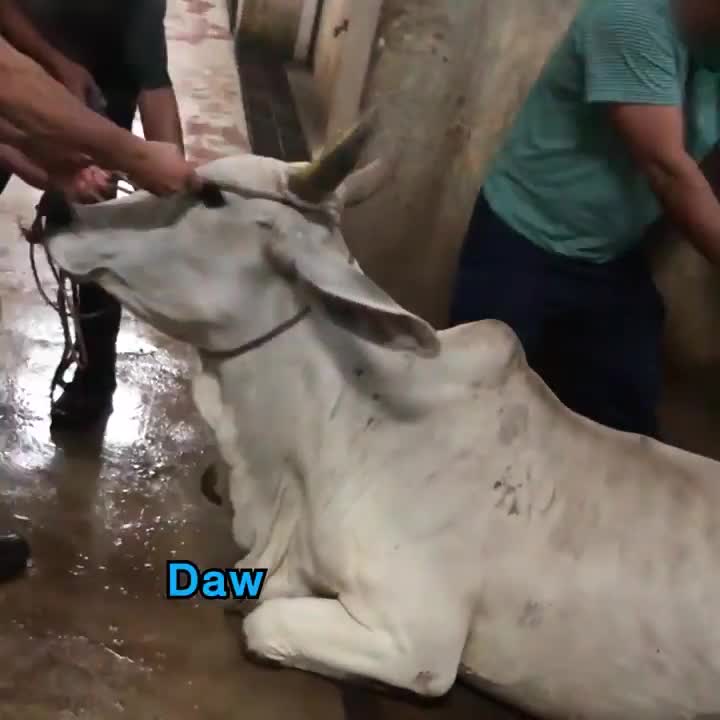






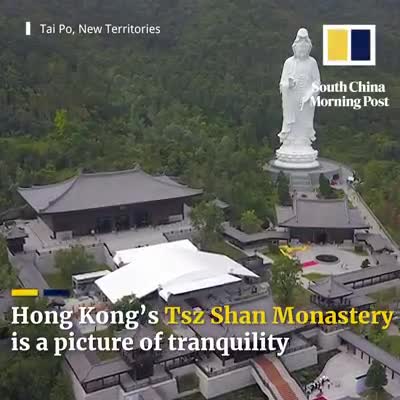

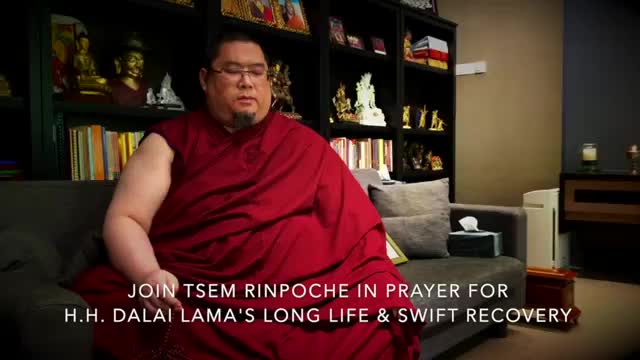

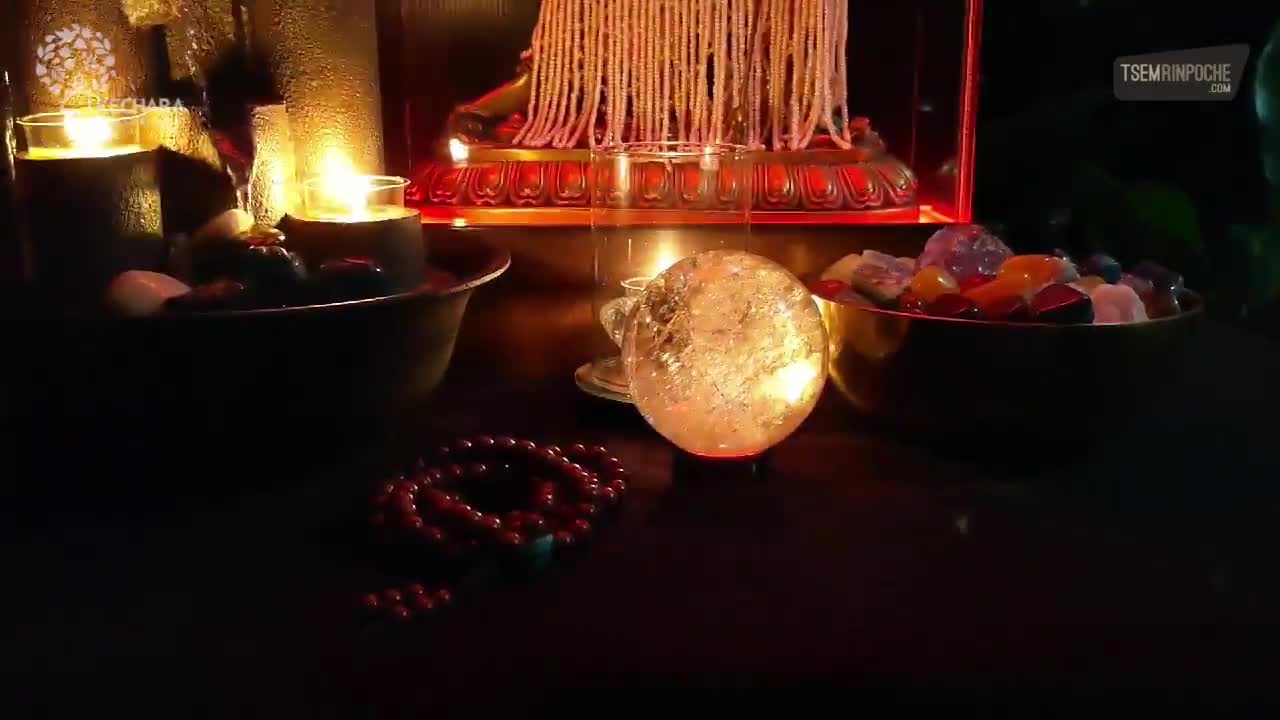

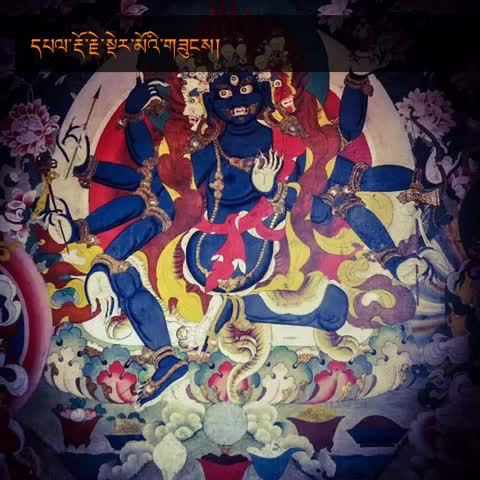
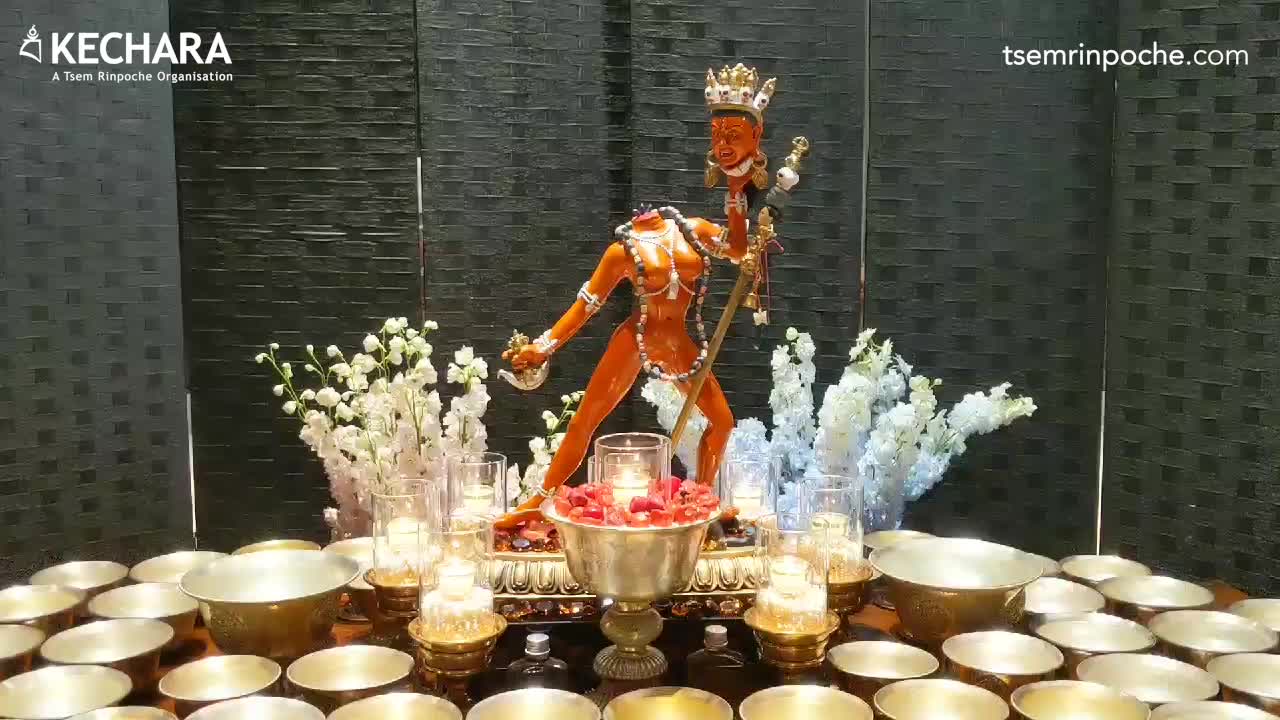




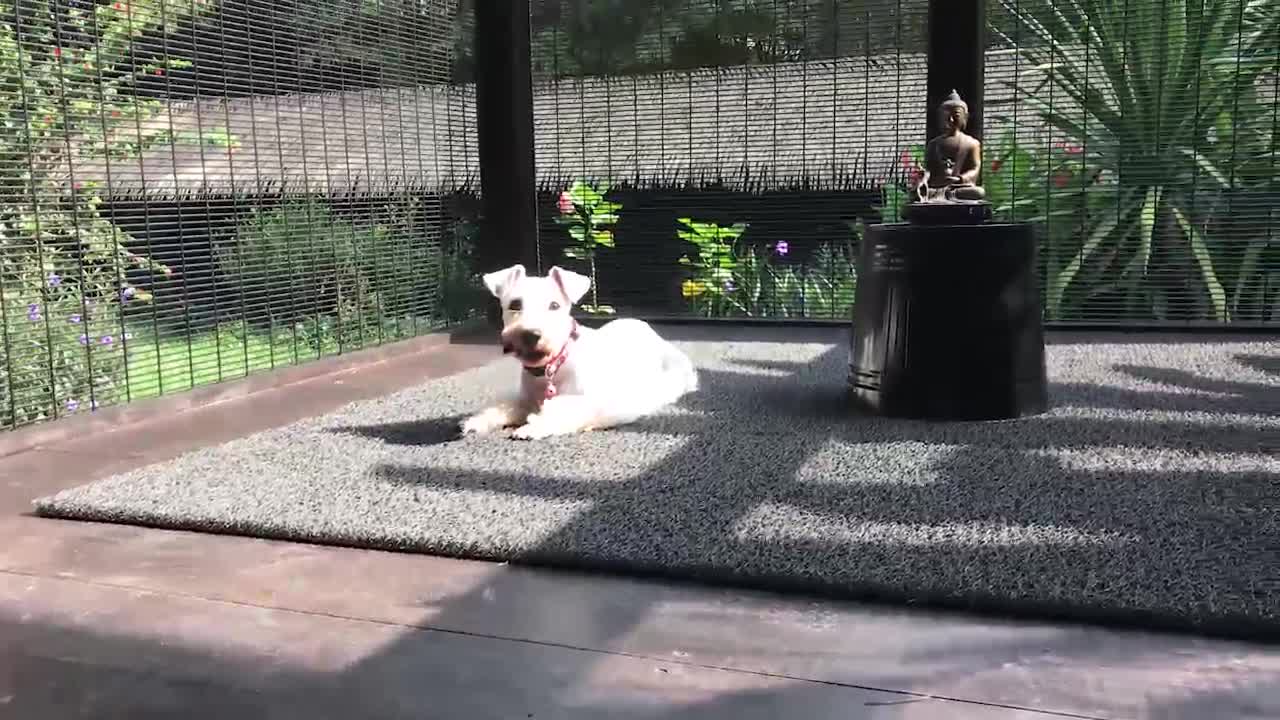








































































Well researched. Thanks.
Thanks you for the interesting article sharing. Actually I don’t really enjoy historical topic but I got impressed with this article of Lost City of Kota Gelanggi. I never knew there are hidden secret place in our country earth.
The lost city of Kota Gelanggi is extremely important ancient archaeological site located in the deep, dense tropical jungle of Johor. It is speculated to be the first capital of the ancient Empire of Srivijaya and is one of the oldest Kingdoms in South East Asia.
What puzzled me was, this Kota Gelanggi structure are similar to Angkor Wat, but the lost city is much older. Hopefully the search for this lost city continues and the truth should be reveal for the generation to come. Thank you for good history and a mystery discovery.
https://bit.ly/2VAZ0W8
Thank you so much for this article. By reading this article, i just knew that The Lost City of Kota Gelanggi is the first capital of the ancient Empire of Srivijaya and is one of the oldest Kingdoms in South East Asia’s Malay Peninsula.
The information about the Srivijaya’s Empire is mostly found in the form of stone inscriptions written in ancient Malay language. The Srivijaya’s Empire spread Buddhism as they established and spread the religion in the places they conquered. Thank you.
Similar to a news I read many years ago from the newspaper, Im not sure is this the one. It mentioned that they found many chinese style cutleries in the forest in Johor, upon checking, the history of these cutliries is even older than the Malays step foot in this land, then after sometime later, I cant find anymore info about that discovery. Im always interested to read about these ancient discovery, because they are what it formed the place we live today.
Buddhism has entered this land many decades ago, there is a Kuan Yin statue made of stone being displayed in the Malaysian National Museum which stated the statue was found around 1000 years ago.
Thank you Rinpoche and blog team for putting together this article about The Lost City of Kota Gelanggi, in Malaysia. It’s nice to know the historical significance it has played in history, and that there are still mysteries waiting to be discovered in the hidden and untouched areas of the world.
This really an amazing discovery of The Lost City of Kota Gelanggi – In Malaysia. I wonder why it wasn’t in the local newspapers? Thank you very much Rinpoche and blog team for sharing this wonderful findings.???
It would be good if the site of the lost city of Kota Gelanggi could be excavated in order to find out more about the ancient Srivijaya empire and how Buddhism was introduced and practised in that region.
In a book by Dr E. Zurcher titled “Buddhism,” published in 1962, there is a short account of the spread of Buddhism in Indonesia and the Malay Peninsula:
“In the first centuries of our era Buddhism began to penetrate the autochthonus cultures of Malaya and Indonesia; Buddhism is attested in the Malay Peninsula about the 4th century AD and Chinese sources speak about the conversion of a Javanese king and his court by the Indian monk Gunavarman in the early 5th century. In the 7th century a flourishing centre of Buddhist studies had developed at Palembang, at that time the seat of the great empire of Srivijaya which included Malaya and in the 8th century also parts of Java. According to the Chinese pilgrim I-Ching, who studied at Palembang for 4 years (685-689), the Buddhism was mainly ‘Hinayanistic’; in fact there was both Brahmanism and Buddhism, and, somewhat later, Tantrism which was introduced from the Buddhist ‘universities’ of the Pala kingdom. The period of the Sailendra rulers in Central Java, whose territory included Java, Sumatra and Malaya, forms the golden age of Buddhism in Indonesia. Buddhism was patronised by the court; to this period belongs the gigantic stupa called Borobudur (8th century), a huge symbolic monument which, by its structure and ornamentation, suggests the various stages of the path towards Enlightenment. In the later periods Brahmanism predominated, along with a debased Tantrism mixed with Sivaism. Buddhist art flourished for the last time on Java under the rulers of Singhasari (1222-1292). Buddhism persisted on Sumatra till the 14th century, and on Java till the 15th century. Then the infiltration of Islam (from the 13th century onward) practically put an end to Hinduism and Buddhism in the Archipelago and in Malaya. In these countries the creed is nowadays mainly represented by a popular and diluted Mahayana Buddhism among the Chinese part of the population.”
Interesting with the discovery of lost city Kota Gelanggi. The presence of a lost city in the jungles at the southern end of the Malay peninsula is interesting. It had been long indicated in Malayan fork lore for over centuries. The search for Kota Gelanggi had been an on going endeavour for many scholars and researchers since the days of the British Empire. Kota Gelanggi is an archaeological site been the first capital of the ancient Empire of Srivijaya. Wow ….it seem was one of the oldest Kingdoms on South East Asia’s Malay Peninsula. Many researchers and archaeologist had been conducting aerial searches of the area before locating the site. The Lost city of Kota Gelanggi was detected by satellite maps which confirms the existence of these structures and visible on site. There are many theories behind this discovery yet till now it is not proved. Some said there is lack of funds to continue the search and some says there is a hidden agenda. It does not really matter, what ever it is great to know of earliest civilisation in Malay Peninsula and its related to Hindu and Buddhist world. The lost city could possibly be the unidentified temple shown in a thousand-year-old illustration from Nepal. The lost city was also a centre of sacred learning, where Hinduism and Buddhist statues and figurines may exist. Researching of this lost city is called off and the area surrounding is a forest reserve. Hopefully the search for this lost city continues and the truth should be reveal for the generation to come. Interesting read , great knowledge and a good research work done.
Thank you Rinpoche for this sharing.
The sixteen volumes of the Prajnaparamitama written upon lapis lazuli paper with ink of gold from the Jumbu River brought from the Naga Realm by Nagarjuna is to be found in the Thang Baidhari of Kathmandu (Thamel Bahal).
The first 3 pages of this text is reportedly written by Manjushri using his finger.
https://www.youtube.com/watch?v=0N9DR5CqCX4&feature=youtu.be
Thank you for this most informative article.
According to Edward Conze, the Prajñāpāramitā Sutras are “a collection of about forty texts … composed somewhere around Indian subcontinent between approximately 100 BC and AD 600.” Some Prajnāpāramitā sūtras are thought to be among the earliest Mahāyāna sūtras.
The (Prajanaparamita) teachings and teachers made its way to South East Asia very early via the Cholas from India. Hence, esoteric Buddhist deities (representing what is today called Vajrayana) were favored in current Java, Sumatra, Peninsular Malaysia, Southern Thailand and Indo-China.
The cult of Prajnaparamita was stimulated by the circulation of manuscript editions of the scripture personified by this goddess, the Ashtasahasrika Prajnaparamita.
The first image is a famous depiction of Ashtasahasrika Prajnaparamita discovered in Java and which currently resides in the National Museum of Indonesia.
The second image of Ashtasahasrika Prajnaparamita relates to a number of bronze icons of Bodhisattvas from the Palembang region of Sumatra.